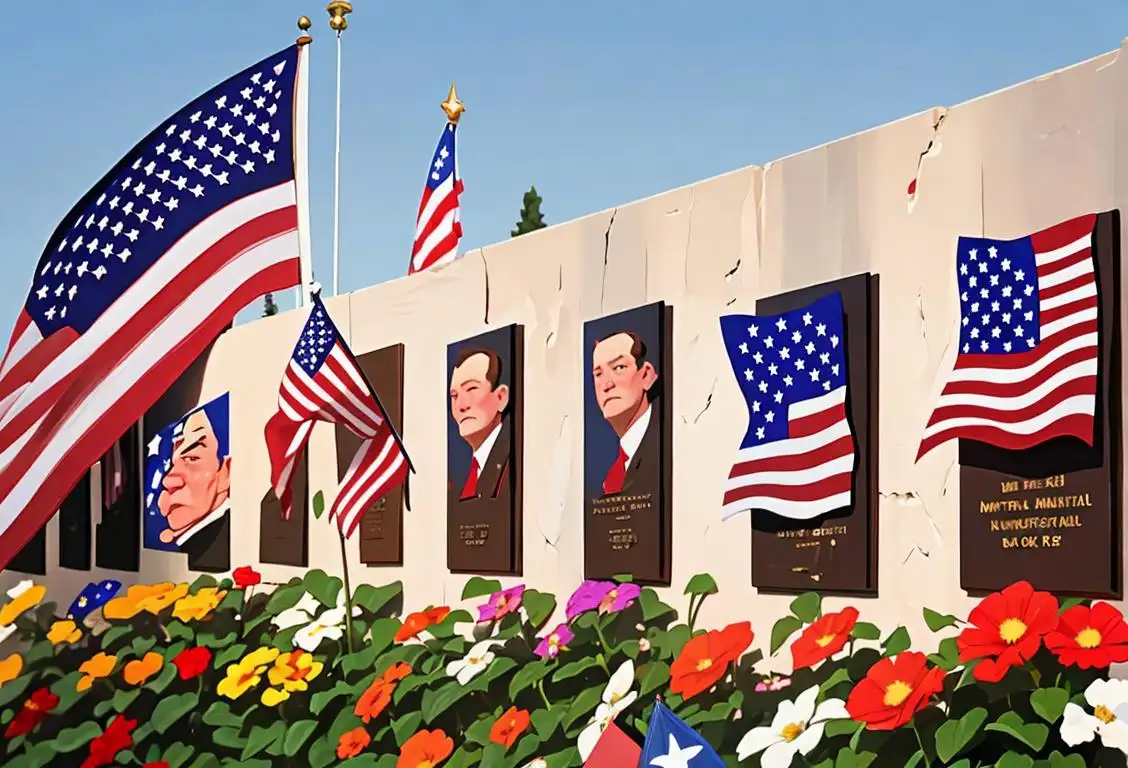National Recruitment Day

Welcome to National Recruitment Day, where we celebrate all things related to finding the perfect job and building the dream team! Whether you're a seasoned professional or a fresh-faced graduate, this day is dedicated to helping you navigate the wild world of recruitment with a dash of humor and a sprinkle of inspiration.
When is Recruitment Day?
It's national recruitment day on the 29th September.
What is National Recruitment Day?
National Recruitment Day is a day to celebrate the art of finding the right people for the right job and the excitement of embarking on new career adventures. It's a time for job seekers to sharpen their resumes, polish their interview skills, and embrace the exhilarating uncertainty of the job market. On this day, recruiters and hiring managers join forces to connect with aspiring candidates, offering a plethora of opportunities and tips to help them land their dream jobs.
The Internet History of National Recruitment Day
The buzz around National Recruitment Day started back in 2015 when it first made waves on the internet. With 333 online mentions, it's clear that this day struck a chord with both job seekers and seasoned professionals looking to find their next star employee. The pinnacle of National Recruitment Day online conversation happened on September 29, 2015, when the internet exploded with discussions, advice, and tales of job hunting triumphs and tribulations.
How to Celebrate National Recruitment Day
Celebrating National Recruitment Day is a unique opportunity for both job seekers and employers. Here are a few suggestions to make the most of this day:
- Dust off your resume and give it a fresh makeover.
- Polish your interview skills by practicing with a friend or mentor.
- Explore job boards and consult with recruiters to find exciting opportunities.
- Attend career fairs or virtual job fairs to connect with potential employers.
- Spread the word about National Recruitment Day on social media using the hashtag #NationalRecruitmentDay.
Did You Know?
National Recruitment Day has become so popular that some companies have even started hosting recruitment-themed parties. Imagine donning your best professional attire, mingling with recruiters over canapés, and putting your networking skills to the test. Who said job hunting can't be a party?!
History behind the term 'Recruitment'
1700s
Military origins
Recruitment has its roots in the military. In the 1700s, it referred to the act of enlisting soldiers into military service. As nations sought to strengthen their armies, recruitment became crucial to ensure a steady stream of troops. Recruitment methods varied across countries, from conscription to voluntary enlistment. Training, loyalty, and the promise of various benefits were important aspects of recruitment during this time.
1470
Emergence of Militia Recruiting
In the year 1470, the term 'recruitment' was not in use, but the concept was already present. During this time, feudal lords and monarchs relied on militia recruiting to gather troops for their armies. The militia, consisting of able-bodied men, would be mustered to serve in times of conflict. This early form of recruiting laid the foundation for the term that would come into use centuries later.
1800s
Industrial revolution and labor force expansion
With the advent of the industrial revolution in the 1800s, the term 'recruitment' found a new application beyond the military. As industries expanded and specialized, there arose a need for skilled and unskilled laborers. Recruitment became crucial in sourcing workers for factories, mines, and other emerging sectors. Companies began to develop recruitment strategies to attract and select candidates, emphasizing skills, experience, and qualifications. The rise of recruitment agencies also contributed to the professionalization of the process.
1642
The Advent of Professional Armies
By 1642, the nature of warfare began to change, and states started to establish professional armies. This transformation led to the emergence of more structured and formal methods of recruitment. Recruiters, often appointed by military officials, were tasked with enlisting soldiers for the standing armies. This marked a significant shift in the concept of recruiting, highlighting the need for strategic selection and vetting of personnel.
1776
The United States Military Conscription
In 1776, during the American Revolutionary War, the United States implemented military conscription, also known as the draft, for the first time. This became a pivotal moment in the history of recruitment as it introduced compulsory enlistment. The draft allowed the government to forcibly recruit individuals into military service, ensuring a consistent supply of soldiers during times of war.
20th century
Recruitment in the corporate world
During the 20th century, the concept of recruitment expanded further into the corporate world. As businesses grew in scale and complexity, the need for specialized talent became increasingly apparent. Recruitment took on a vital role in acquiring personnel for various positions, from entry-level roles to executive positions. Job advertisements, campus recruitment programs, and the use of recruitment agencies became common practices. This era also saw the rise of HR departments dedicated to managing the recruitment process and personnel selection.
21st century
Digital revolution and online recruitment
With the rapid advancement of technology in the 21st century, recruitment underwent a significant transformation. Online platforms and tools revolutionized the way organizations find and attract talent. Job websites, professional networking sites like LinkedIn, and applicant tracking systems streamlined the recruitment process, making it more efficient and accessible. Moreover, social media platforms provided new avenues for recruitment advertising and candidate evaluation. Online job applications and video interviews became increasingly prevalent, altering traditional recruitment practices.
1917
World War I and Widespread Recruitment
The year 1917 saw the outbreak of World War I, a conflict that required a massive mobilization of troops. Nations involved in the war launched extensive recruitment efforts to fill their ranks. Governments used various methods like propaganda campaigns, nationalistic appeals, and incentives to encourage voluntary enlistment. The scale of recruitment during this period was unprecedented, symbolizing the height of public involvement in military service.
1940
The Introduction of Selective Service
In 1940, with the escalation of World War II, the United States reintroduced conscription through the Selective Service and Training Act. This act ensured the systematic and fair selection of individuals for military service. The Selective Service System employed a lottery system and established specific criteria to determine who would be called upon for duty. This method of recruitment aimed to bolster the armed forces with qualified personnel.
1990
Digital Age and Online Recruitment
With the advent of the internet and the digital age, recruitment methods underwent a significant transformation. Starting in the 1990s, online recruitment platforms emerged, offering a new way for job seekers and employers to connect. The internet allowed for broader reach, improved efficiency, and enhanced accessibility in the recruitment process. Job boards, social media platforms, and specialized websites revolutionized how organizations find and attract talent.
Did you know?
Did you know that National Recruitment Day inspired some companies to host recruitment-themed parties? It's a chance to dress to impress and network while enjoying some delightful canapés!Tagged
awareness funFirst identified
29th September 2015Most mentioned on
29th September 2015Total mentions
333Other days
Nurses Day
Former Prisoner Of War Recognition Day
Press Day
Handloom Day
Heroes Day
Memorial Day
Dance Day
Bestfriends Day
Liberation Day
Love Your Pet Day









